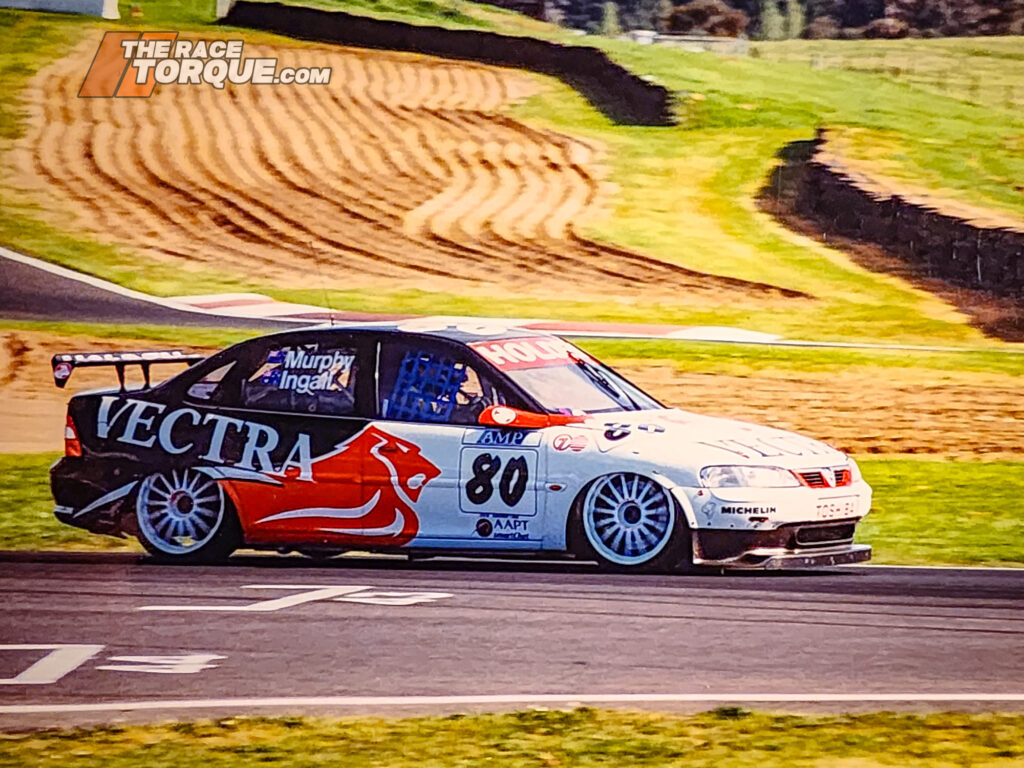The Battle of Bathurst: The Winners and Losers
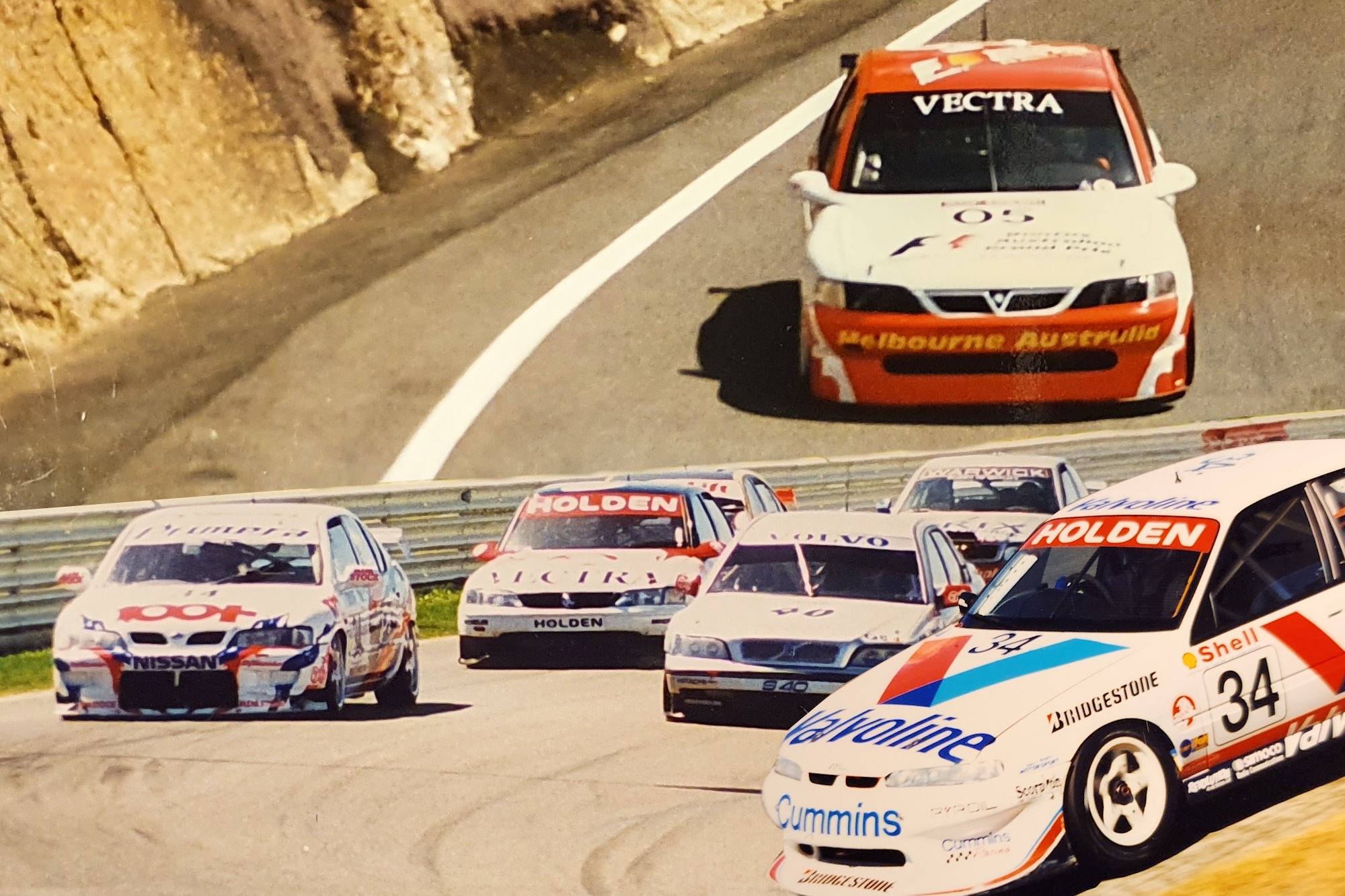
Through five parts and over 18,000 words, these pages have recently taken readers on a walk down memory lane to perhaps the most turbulent times in Australian motorsport – the Battle of Bathurst between Super Touring and V8 Supercars.
Read: Part 1 – The Battle of Bathurst: V8s Vs Super Touring, TV Wars & Council Plays
Read: Part 2 – The Battle of Bathurst: Lawyers Engaged, V8s & Super Tourers Rage War
Read: Part 3 – The Battle of Bathurst: Taking a Financial Bath, Two Bathurst 1000s in One Month
Read: Part 4 – The Battle of Bathurst: Publicly Disappointed, Epic Race & the Blame Game
Read: Part 5 – The Battle of Bathurst: Death Threats & Regrets, Epilogue to Motorsport’s Civil War
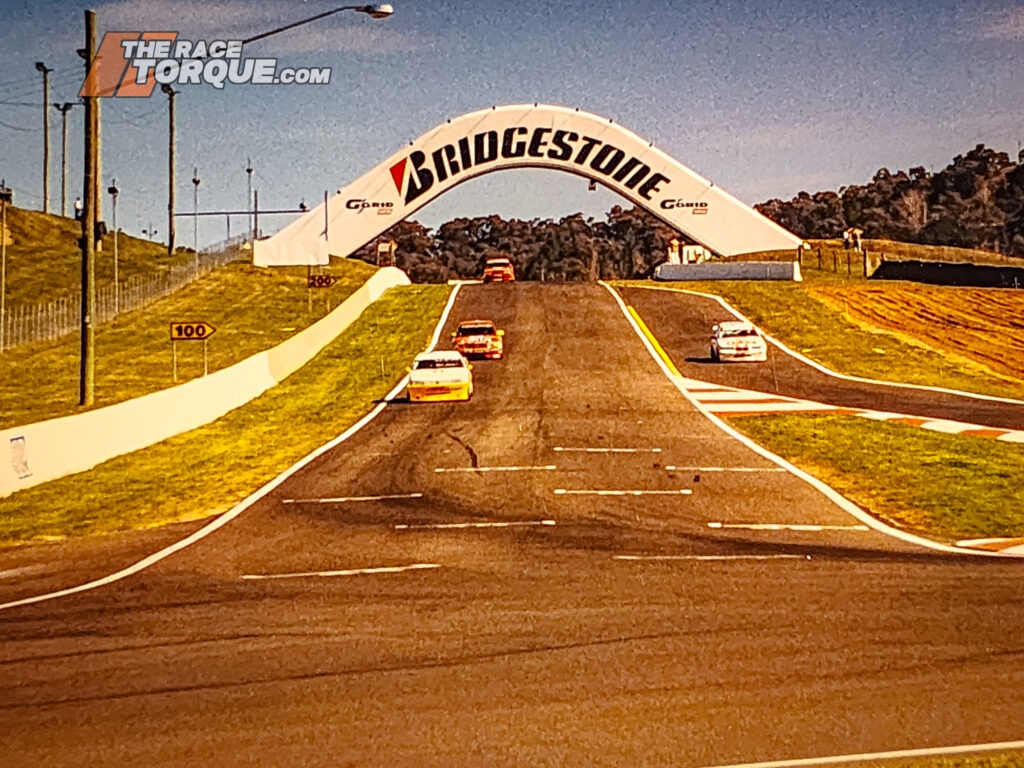
Reflections on the Super Touring 1000s
From my perspective, it was an important rabbit hole to fall down, with those two Super Touring events my very first visits to The Mountain.
Due to a quirk of timing with Queensland school holidays, the V8 events were off the agenda, however, the Two-Litre races were accessible and left an indelible mark on this young race fan.
For the 1997 meeting, I was trackside on Wednesday only, and I set out to take in the complete Bathurst experience. During the day, I walked to every single vantage point around the circuit, armed with studies of where to take photos after forensically dissecting The Great Race annuals like a proper anorak.
My first mistake was thinking it would be a great idea to hike from Harris Park to the top of the hill via Barry Gurdon Drive.
The Mountain claimed its first victim that year early, and it was the 15-year-old version of the author.
Fortunately, a Range Rover pulled up and offered me a lift. It was driven by Terry Morris.
When asked who I thought would win on Sunday, this undercover race fan said, “Paul Morris, sir”, and his face lit up…
Dropped off at Skyline, I traversed from Forrest’s Elbow to The Cutting and, in the arvo, completed a full lap of the bottom of the track.
It was clear that this wasn’t the Bathurst of old – there was a smattering of punters perched in their traditional camping spots, but you feel these were grizzled veterans that had their holidays tethered to the long weekend rather than being hardcore Two-Litre fans.
One memory of that day was seeing Peter Brock’s Vectra return to the pits on the tilt tray after he barrel-rolled it through The Chase.
For 1998, we packed up Uncle Rosco’s Volvo Estate and headed down south for the full race weekend experience.
The fact that we stayed at the Country Lodge Motor Inn on William Street in a room next to David Auger would suggest that accommodation wasn’t difficult to book, or indeed, modern race week inflation was a thing.
A few moments stood out from that weekend, including the downtown driver’s meet and greet and also following Wayne Wakefied’s exploits closely, as he was enlisted in Malcolm Rea’s rather eye-opening Toyota Carina.
On race day, I got up at 5:30am to walk from the motel to the track so that I could claim the perfect spot at Murray’s Corner to capture the start shot of the race.
I stood there by myself for four long hours before being told not to stand on the upturned garbage bin at the start, an instruction that was absolutely ignored.
Then there was seeing the smoke rise above the pits from on top of the hill from Triple Eight’s latest botched pit stop.
I remember being in the back of the pits when the karambolage in the Esses broke out, and multiple main players were eliminated from the race. The wrecks subsequently returning to Parc Ferme on tilt trays providing a forlorn sight.
Then at the podium, there was a lone inebriated fan who hadn’t read the memo about decorum at Super Touring meets.
“Don’t crowd me, don’t crowd me”, he sang out sarcastically as he flailed around on repeat as Richo sprayed champers from above. That drunk bloke was clearly an arsehole…
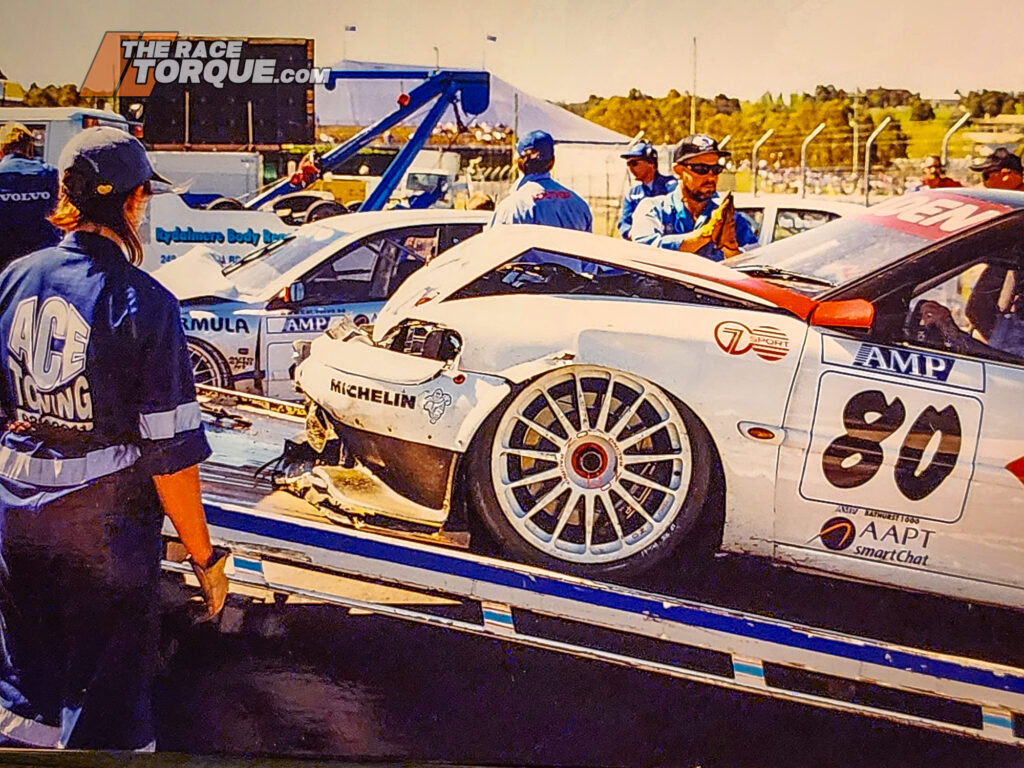
Sliding Doors Slid Closed
During this journey to recap the series of events that broke out nearly 30 years ago, it was interesting to read back the plays and the quotes from those steering the motorsport ship.
The he said, she said and finger-pointing would have made for a brilliant time to covering the sport in the media.
Conflict and hate shift magazine units.
So, who was to really blame?
In a case of the chicken and the egg, simplistically, there were two root causes: the touring car participants’ lack of organisation and the AFL’s outrageous popularity.
A couple of years into the Five-Litre V8 category, the teams knew that they needed specialist help to deliver themselves value that the sport was truly worth.
Enter IMG.
It’s interesting now to look back at Tony Cochrane’s original manifesto for the sport outlined in September 1996 and see how many of the key points were delivered.
A better TV deal and recognised time slots were achieved, ditto increasing audiences. Taking the V8s overseas has happened, franchises were implemented, circuit promoters paying sanction fees became a reality, fan facilities improved, and the drivers were promoted as stars.
The sport was also unified under the V8 Supercars banner.
Ultimately, the only real misses from that initiative’s launch were the ultimate lack of an event in South Africa and the inability to enlist Asian drivers full-time in the series.
Channel Seven was also at the crux of the war.
Remember, in 1997, multi-channels on free-to-air TV were not a thing.
Therefore Seven, with its AFL rights, absolutely gave that sport priority in programming throughout the year, especially in southern states – you would be a dang fool not to broadcast content that can get you the biggest possible ratings.
That said, Bathurst could absolutely stand on its own two feet and deliver big ratings, much like the Melbourne Cup is the only horse race that truly stops the nation.
IMG’s brief was simple: turn an amateur sport into a business, and as a business, it was out to get the best possible outcome for its shareholders – and up to 1996, the teams were tearing up money to participate in the Bathurst 1000.
AVESCO and the Mount Panorama Consortium’s initial meeting focused on prizemoney rather than ultimate TV rights.
It would have been interesting to see how different the world would have been in the first place if the Consortium had swallowed its pride and come to the party with a greater investment in competitors, a move that they ultimately had to splurge on by going down the Two-Litre path.
With Ten on board, the V8 circus’s shareholders finally had TV rights pouring in, but Ten needed to secure a long-distance race as part of its contract; thus, the political plays that saw the second race become a reality.
Once again, in an alternate universe, if Seven had somehow ceded TV rights to Ten in the first instance, how much money would they have saved over the next three years in trying to keep the Bathurst dream alive?
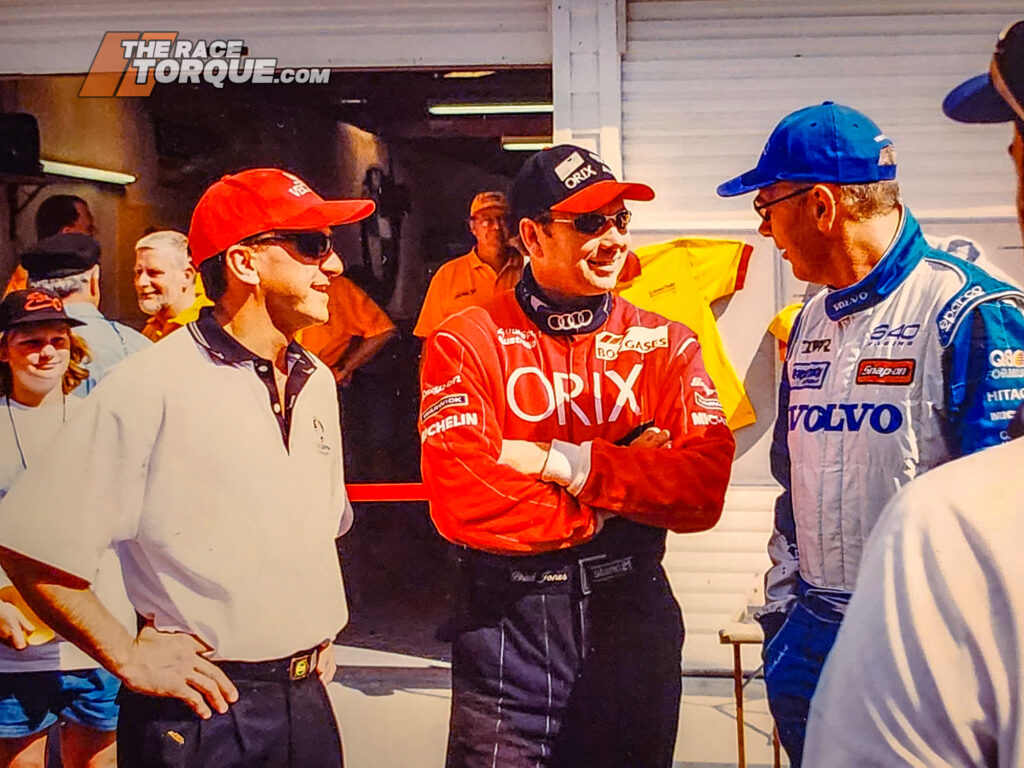
Poor Super Touring
The war wasn’t Super Touring’s fault; it was simply dragged into the battle, one in which it was never truly equipped to succeed.
The Consortium needed something, and with the promise of growth into the future, the Two-Litre cars presented the best alternative at the time.
However, everything that could conspire against the class did.
Firstly, as noted by Super Touring supremo Alan Gow in contemporary times, the FIA took control of the rules policing the sport in 1994, ultimately resulting in an arms race between manufacturers that destroyed the class from within.
By the time 1997 rolled around, the spending by the leading teams was becoming unsustainable, and by the following year, the writing was well and truly on the wall.
Even if Channel Seven had been willing to continue after 1998, they wouldn’t have had much to work with moving forward.
The Australian Super Touring Championship was fun at its peak, but they were fundamentally expensive cars to run, and without the extension of solid technical support from Europe, arranging a quality field of factory-backed machines was never going to grow significantly from key players like Volvo and Audi.
Also conspiring against the Super Tourers were unfortunate date clashes, with the event going head-to-head with the Australian Motorcycle Grand Prix, which was broadcast on Channel Ten and featured Mick Doohan at the height of his powers.
That’s tough, ditto the event trying to battle the news headlines in 1998 against a federal election, which was held on the Saturday of race weekend, while both years, Bathurst clashed with the German Super Touring series finale, scheduling which was particularly lamentable in year two.
V8 Supercars, on the other hand, were absolutely kissed by the retirement call of Peter Brock, which always ensured that the rebel 1000 would be a blockbuster from year one.
The Brock factor at the Two-Litre race in 1997 may have attracted some fan support, but it wasn’t enough, especially from the investment that was pumped into that effort.
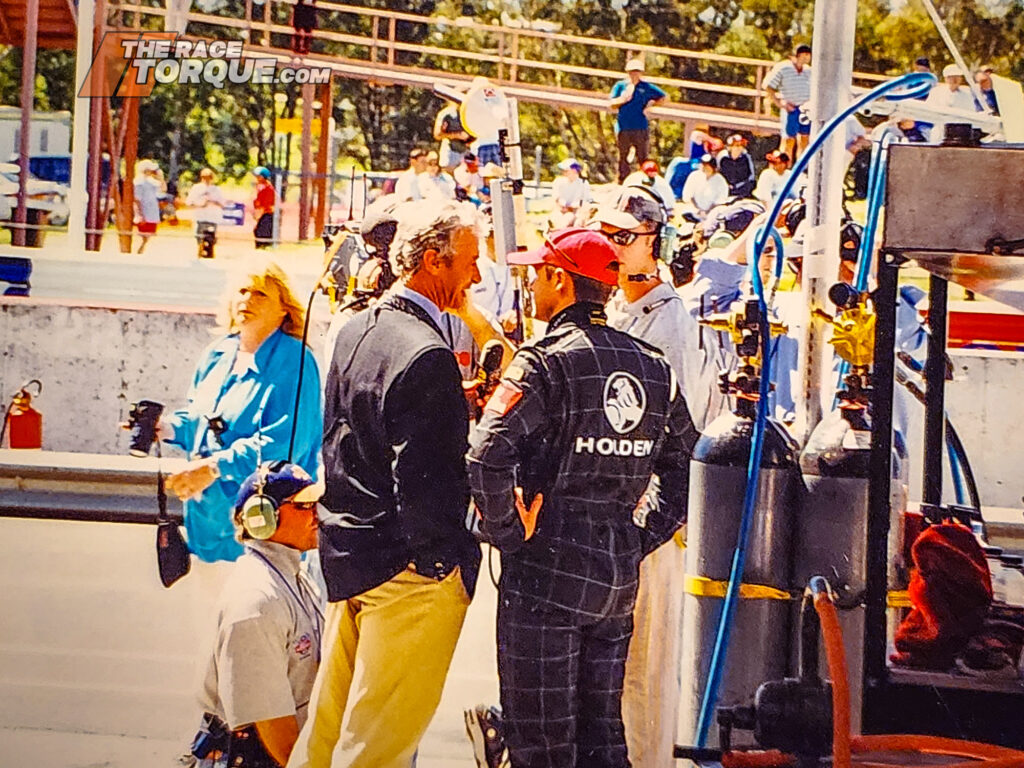
Talking Big
Reading through the various media clippings of the day, there were many vicious barbs traded, but taking the words for face value alone, there were contrasting outcomes from the warring parties.
Tony Cochrane was a divisive character, he was big, bold and brash, and not necessarily everyone’s cup of tea.
However, there is no doubt that he simply got shit done, and a large part of the success of the V8 Supercars business can be pinned on his leadership.
Since he walked away from the sport, it would be fair to say that it hasn’t registered the wins that the business enjoyed during its initial period of growth.
Successive owners haven’t exactly moved the needle to the extent of the heydays.
Some people in the industry have resented Supercars’ success – but it doesn’t hold a monopoly on being a prosperous category, with the right ingredients, any class has the opportunity to flourish.
From the Super Touring side, the failings of the Bathurst experiment can be summed up by TOCA Australia boss Kelvin O’Reilly at the time:
“People who go to Super Touring events aren’t going to go without a shower for a week or hang their washing on a fence. The town was fully booked out, which leaves few places for people to stay. Most would not stay on The Mountain or act like people out of ‘Deliverance’.”
How on earth could Super Touring succeed in Bathurst if the rural setting couldn’t accommodate its boujee fanbase?
Subsequently, the V8 event has seen the continued steering of the ship into expanding the camping offering to its heartland audience – when you have a centre of 35,000 people, a tent city is an obvious solution if you want to accommodate 50,000 visitors.
The other thing that was apparent from reading the many pages of the contemporary specialist press of the day is that Super Touring promised big but failed to deliver on multiple fronts.
From the outset of the announcement of the Super Touring 1000, 10-15 internationals were set to be joined by 20-25 local entries, with high aims over the three years ever truly realised.
Talk of Super Touring rounds in New Zealand and Macau were mentioned, a 500km lead-up race to Bathurst, the 1000 becoming the World Cup, an Asian series and more were floated in the press, too.
Elsewhere, the Mount Panorama Consortium planned to invite production cars in 1997, a move that fell through when PROCAR received their own feature race at the V8 1000. At the time, the Consortium wasn’t fussed, although it flipped for ’98 when the field needed padding out.
Prizemoney was another interesting thread that ran through the tale of the era.
Certainly, both races went hard in an act of bravado for 1997, but the performance bonuses diminished strongly when direct payments to all competitors took over, especially for the Super Tourers.
Finally, the ARDC’s role in the saga is an interesting one.
The club, which had been intrinsically linked to car racing at Mount Panorama, was burned badly by the international invasion of 1987, and it seemingly came close to sinking following the dramas of 1997.
They were ultimately caught in a tough place in the TV war, and they lost multiple farms because of it.
